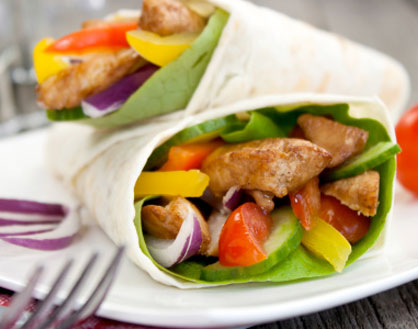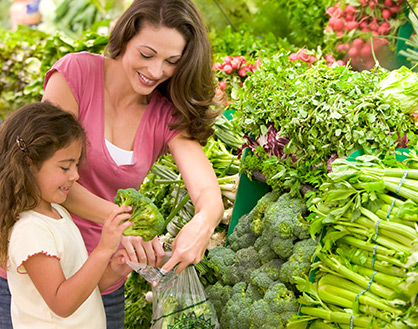Keeping food safe— It’s as easy as clean, separate, cook and chill.
Clean: Wash Hands and Surfaces Often
Bacteria can be spread all around the kitchen and get onto hands, cutting boards, utensils, counter tops and food. Be sure to keep your cooking area clean as possible.
- Wash your hands with warm water and soap for at least 20 seconds before and after touching food, and after using the bathroom or changing diapers.
- Wash your hands after playing with pets or visiting petting zoos.
- Wash your cutting boards, dishes, utensils, and countertops with hot soapy water after preparing each food item and before you go on to the next food.
- Think about using paper towels to clean up kitchen surfaces. If you use cloth towels, wash them in the hot cycle when doing laundry.
- Wash fresh fruits and vegetables under running tap water, including those with skins and rinds that you don’t eat.
- Rub firm-skinned fruits and vegetables under running tap water.
- Keep books, backpacks or shopping bags off the kitchen table or counters where you are making or eating food.
- Download the Clean Facts Sheet
Separate: Don’t Cross-Contaminate
Cross-contamination is how bacteria can be spread. When handling raw meat, poultry, seafood and eggs, keep these foods and their juices away from ready-to-eat foods.
- Separate raw meat, poultry, seafood and eggs from other foods in your grocery shopping cart, grocery bags and in your refrigerator.
- Use one cutting board for veggies and fruit, and a different one for raw meat, poultry and seafood.
- Use a food thermometer, just like the one in this video, to make sure you cook your food to a safe internal temperature.
- Never put cooked food on a plate that previously held raw meat, poultry, seafood or eggs.
- Download the Separate Facts Sheet

Cook: Cook to Proper Temperatures
Food is safely cooked when it reaches a high enough internal temperature to kill the harmful bacteria that cause foodborne illness. Use a food thermometer to measure the internal temperature of cooked foods.
Follow this chart to the right to make sure you’re cooking food to the right temperature.
Chill: Refrigerate Promptly
Refrigerate foods quickly because cold temperatures slow the growth of harmful bacteria.
Do not overstuff the refrigerator. Cold air needs to circulate to help keep food safe. Keeping a constant refrigerator temperature of 40°F or below is one of the best ways to reduce the risk of foodborne illness. The freezer temperature should be 0°F or below.
- Refrigerate or freeze meat, poultry, eggs and other food that can go bad as soon as you get it home from the store.
- Never let raw meat, poultry, eggs, cooked food or cut fresh fruits or vegetables sit at room temperature more than two hours before putting them in the refrigerator or freezer (one hour when the temperature is above 90°F).
- Never defrost food at room temperature. Food must be kept at a safe temperature during thawing. There are three safe ways to defrost food: in the refrigerator, in cold water and in the microwave. Food thawed in cold water or in the microwave should be cooked immediately.
1) in the refrigerator,
2) in cold, running water, and
3) in the microwave using the defrost setting. Food thawed in cold water or in the microwave should be cooked immediately.
- Always marinate food in the refrigerator.
- Divide large amounts of leftovers into shallow containers for quicker cooling in the refrigerator.
- Use or throw out refrigerated food on a regular basis.
- Download the Chill Facts Sheet













